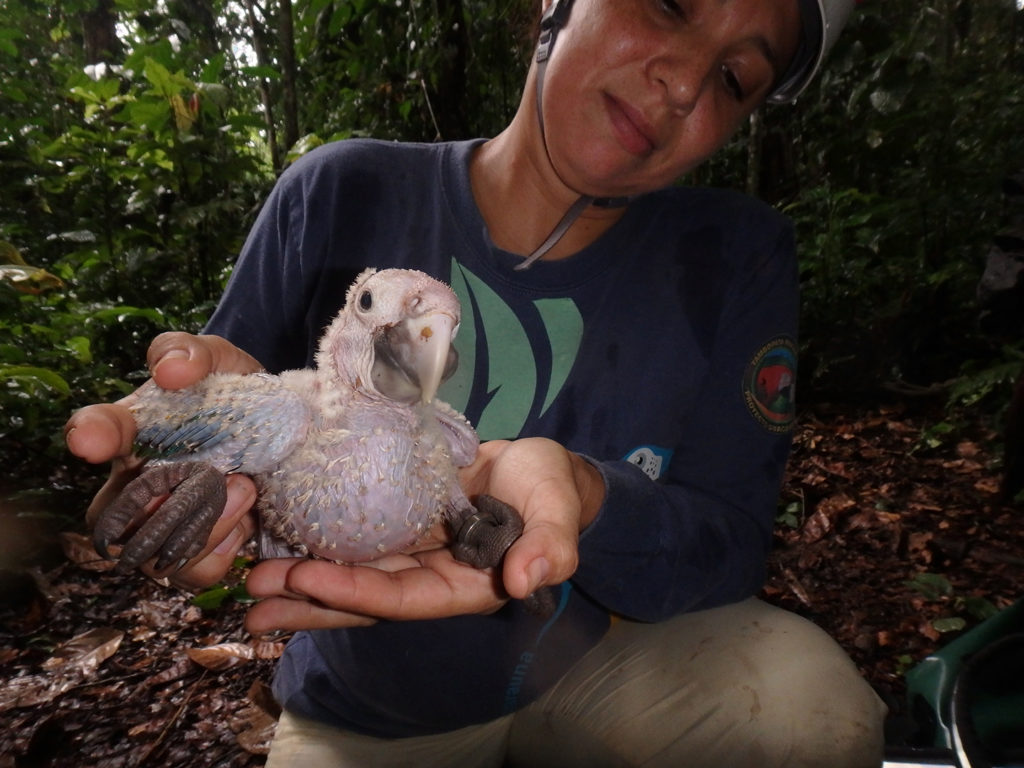The real macaws: New method matches chicks with foster parents

Photo by Rodrigo León
An overwhelmingly successful chick fostering experiment conducted by the Texas A&M College of Veterinary Medicine & Biomedical Sciences’ (CVMBS) The Macaw Society will greatly improve the number of scarlet macaw chicks that survive and fledge (fly away) from their nests each year.
Gabriela Vigo-Trauco, a CVMBS postdoctoral research associate and co-director of The Macaw Society, has spent the past decade studying scarlet macaws’ nesting behavior and refining a new system for introducing chicks to foster parents.
Vigo-Trauco’s interest in macaws began as a young child, but her interest in the survival of macaw chicks, specifically, began during her last year of college at the Universidad Nacional Agraria La Molina in Lima, Peru.
“I started studying the behavior of macaws in Tambopata and saw that they don’t feed all of their chicks the same amount of food and that they don’t give them the same amount of parental care. They would favor the first chick, give less to the second one, and pretty much ignore the third and fourth,” Vigo-Trauco said. “This created a brood in which the first chick survived to fledge, the second one died sometimes, and the third and fourth ones never survived.”
Her research, done in collaboration with CVMBS associate professor Donald Brightsmith and Rony Garcia-Anleu, of Guatemala’s Wildlife Conservation Society, was published in Diversity and was part of Vigo-Trauco’s dissertation for her doctorate in wildlife and fisheries sciences, awarded in May 2020.
“My big question was, ‘For those chicks being discarded by nature, how can I recover them and put them back in the population to try to increase the macaws’ numbers?’” she said.
She began her work by installing cameras in man-made macaw nesting boxes to monitor the macaws’ interactions with their chicks.
After determining that a lack of food was not the cause of the birds’ behavior, Vigo-Trauco realized that as the time between when the first and second chicks hatched grew longer, it became less likely that the parents would care for the chicks equally.
Building off of a study done in Guatemala, she developed the idea of removing the second chicks from their nests and giving them to a different set of macaw parents that would be willing to care for them, either because they lost their own chicks to predation, poachers, or natural factors or because their chicks were already grown enough to need less care.
“When the second chick hatches four days after the first, it was more than 80% likely to die of starvation. I would collect these chicks and raise them in our research center for 22 days or until they opened their eyes. Then, we placed them in different nests,” she said. “In normal conditions, that chick would have died, but after I placed it back in a nest, it survived to fledge.”

